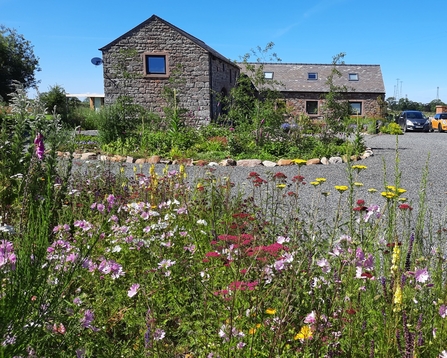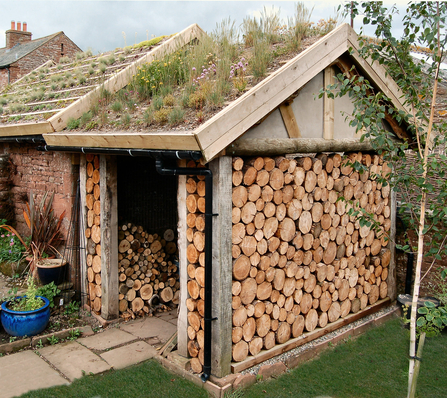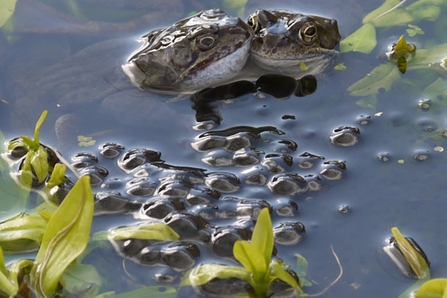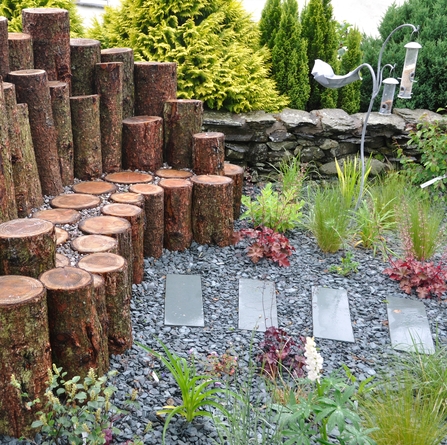Like any living thing, insects need shelter from the elements, food and drink. In your garden, that tends to mean some sort of accommodation – from a log pile to a bug hotel – as well as plenty of flowering plants for all seasons and a water feature, the more shaded and overgrown the better! I’d like to look at these in turn and include a few links to advice elsewhere on the Cumbria Wildlife Trust website as there are plenty of ideas and inspiration online.
Pollinator populations
Meadow mixes and planted roofs are great ways to introduce a bit of wild into your garden but they need work in terms of preparation, planting and maintenance if they’re going to maximise the support for insect populations in your garden and look good too.
One of the most cost-effective ways of creating such a planting scheme on a large scale is to use seed mixes. This isn’t just about combining lots of different plants in one scheme. A good mix should also include succession flowering so that you have interest from May through to the first frosts.
There are lots of companies offering seed mixes nowadays but I’ve always been particularly fond of Pictorial Meadows. The company was conceived by Professor Nigel Dunnett when he was a lecturer in the Landscape Institute of Sheffield University and it is renowned for its work in the London 2012 Olympic Park and, more recently, several Greening Grey Britain projects.
Annual mixes, sown every year, are the most popular type. They are available in a range of colour themes and for a variety of soils and aspects but a majority prefer largely sunny, open and well-drained situations. I worked with a friend, Ali, on aspects of her Penrith garden and, as she was a volunteer Games Maker in London for 2012, she loves having her own little bit of the Olympic Park at home. Mind you, she didn’t underestimate the work involved in good soil preparation before initial planting and, as she is using annual mixes, there’s a need to dig the ground over thoroughly every year.
Perennial mixes are also available and there are choices of mixes for different soils and situations. In Cumbria, these are usually sown in the spring, as the ground begins to warm, and they can take a couple of years to become established. During that time, you might need to remove a few of the more “thuggish” weeds such as dandelions and dock leaves. I recommend pulling these out carefully and then filling the gaps with bulbs. It is worth this effort as, once established, perennial mixes repeat their show every year.
A final “mix” option is wildflower turf for instant impact. It costs more but might be worth the investment if you want to establish your planting as quickly as possible and start with relatively established plants.





